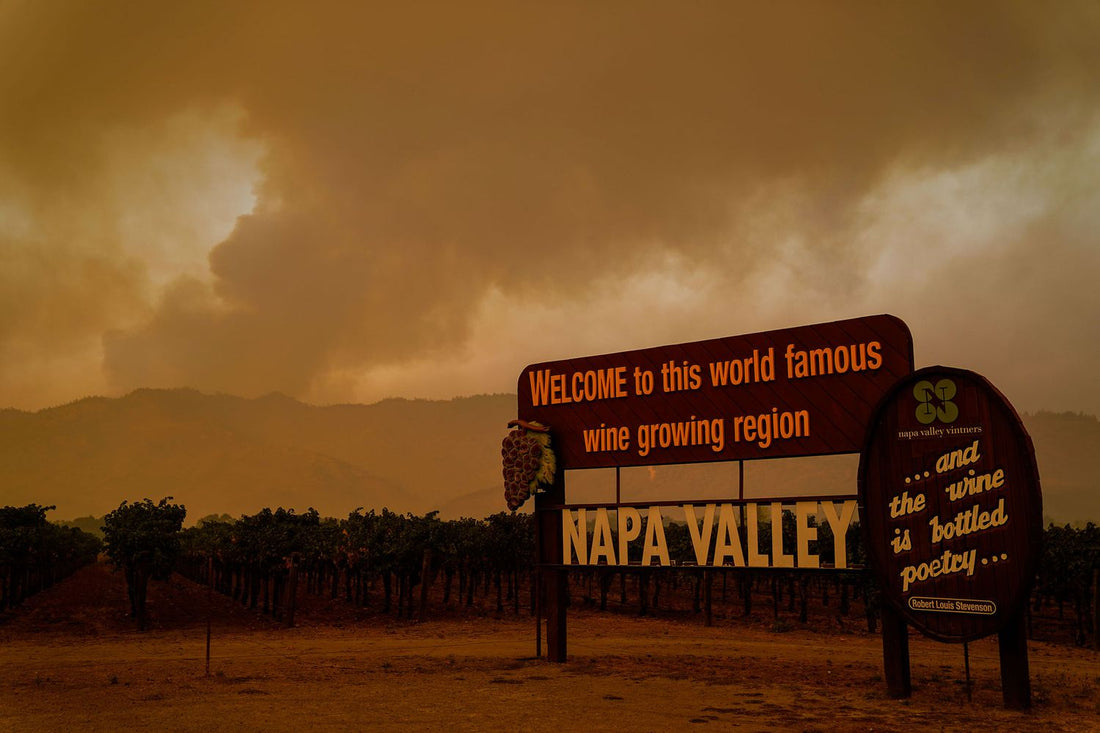Perhaps the biggest fear that both growers and wine lovers share is wildfire in the vines. As shown during the Napa Fire of 2017, wildfires can not only destroy crops and historic wineries, but harm tourism and even the reputation of the vintage.
The ongoing rise in global temperatures has brought to the forefront the debate over how heat and smoke impact vineyards. In this blog post, we'll separate myths from facts to better understand how these factors influence grape and wine quality.
Myth 1: Wildfire Smoke Always Ruins the Grapes
Fact: Wildfire smoke does have the potential to damage grapes, but it doesn't always ruin them. The main concern with smoke is the risk of "smoke taint," where compounds from the smoke are absorbed by the grape skins, potentially leading to undesirable flavors in the wine. However, the extent of smoke taint depends on several factors including the proximity of the vineyard to the fire, the density and duration of the smoke, and the stage of grape development.
In Napa Valley, the wildfires of 2017, 2018, and particularly 2020 were severe. While some vineyards experienced significant smoke taint, many others were less affected. Winemakers have developed techniques to mitigate smoke taint, such as using activated charcoal during fermentation or blending with unaffected wines to dilute any smoky flavors. Therefore, while smoke can be detrimental, it doesn’t necessarily spell disaster for every vineyard.
Myth 2: Extreme Heat Leads to Better Wine
Fact: Heat can indeed affect grape quality, but extreme heat often poses more problems than benefits. Grapes need warmth to ripen properly, but excessive heat can lead to dehydration, sunburn, and heat stress. These conditions can cause grapes to ripen too quickly, resulting in imbalanced sugar and acid levels, which are crucial for high-quality wine production.
For instance, the heatwaves during the summers of 2017 and 2020 in Napa Valley accelerated grape ripening, leading to a harvest that was sometimes rushed to avoid over-ripening and the loss of acidity. This rapid ripening can compromise the complex flavors and balance that Napa Valley wines are known for. Additionally, extreme heat can reduce yields, as stressed vines may produce fewer grapes.
Myth 3: All Smoke Taint Can Be Detected in the Vineyard
Fact: Smoke taint can be notoriously difficult to detect in the vineyard. The compounds responsible for smoke taint, like guaiacol and 4-methylguaiacol, are often bound in a form that is not readily detectable by taste or smell in the fresh grape. It is only during the fermentation process that these compounds are released and become noticeable.
This means that vineyard managers and winemakers need to rely on lab testing to detect potential smoke taint before fermentation. This was a significant challenge during the 2020 wildfires, where testing facilities were overwhelmed, leading to delays and uncertainty for many producers.

Myth 4: Vines Can Recover Fully After Exposure to Smoke and Heat
Fact: While grapevines are resilient and can recover from stress, prolonged exposure to smoke and heat can have long-term effects. Repeated exposure to smoke can lead to a buildup of taint compounds in the vineyard environment, potentially affecting future crops. Similarly, vines subjected to extreme heat year after year may experience chronic stress, which can weaken them and reduce their productivity over time.
In Napa Valley, ongoing climate change and the increasing frequency of wildfires pose a persistent threat. Vineyard management practices are evolving to mitigate these risks, including adopting more resilient grape varieties, improving canopy management to protect grapes from sunburn, and investing in smoke filtration technologies.
Myth 5: Wine Made from Grapes Exposed to Smoke Is Always Inferior
Fact: While smoke-exposed grapes can produce wine with noticeable taint, this is not always the case. As mentioned, winemakers have several tools at their disposal to manage and reduce the impact of smoke taint. These include selective harvesting, using additives that bind smoke compounds, and advanced filtration techniques. Moreover, the perception of smoke taint can vary among consumers, with some actually enjoying the smoky notes in certain wine styles.
In Napa Valley, the 2020 vintage faced substantial challenges from smoke, but many wineries were able to produce high-quality wines by carefully managing the winemaking process. Magna Carta actually decided to forego the 2020 vintage, as our winemakers didn't feel the vintage lived up to our reputation. This demonstrates that while smoke exposure can be a significant hurdle, it does not inevitably result in inferior wine.
Myth 6: There's Nothing Vineyard Managers Can Do to Protect Against Heat and Smoke
Fact: Vineyard managers are not powerless against the threats of heat and smoke. There are proactive measures that can be taken to protect the vines and grapes. For heat, strategies include adjusting irrigation schedules to ensure vines remain hydrated, employing shade cloths, and optimizing canopy management to protect grapes from direct sunlight.
To mitigate smoke impact, some vineyards use wind machines to disperse smoke, while others employ overhead sprinklers to wash off ash and soot. Additionally, investing in early detection systems and predictive models helps vineyard managers make informed decisions during wildfire events.
The impact of heat and smoke on Napa Valley vineyards is complex and multifaceted. While these elements pose significant challenges, advancements in vineyard management and winemaking techniques have provided tools to mitigate their effects. Understanding the myths and facts about heat and smoke helps consumers appreciate the resilience and dedication of winemakers in producing high-quality wines, even in the face of environmental adversity. As climate change continues to shape the landscape, the wine industry’s adaptability and innovation will be key to maintaining the excellence of Napa Valley wines.

